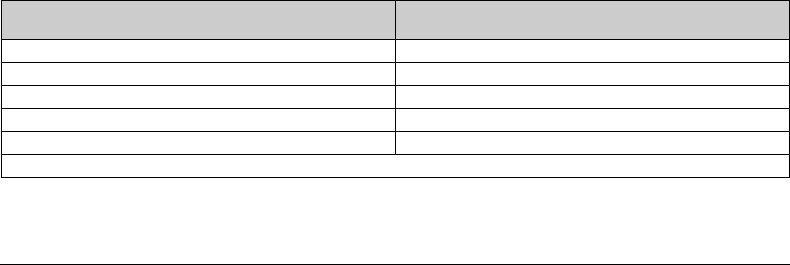Operating Manual Owner manual
Table Of Contents
- Operating overview
- 1 Brief description
- 2 Identifying the device version
- 3 Mounting
- 4 Electrical connection
- 5 Startup of the device
- 5.1 Display and control elements
- 5.2 Setting the display after device is switched on
- 5.3 Selecting and editing parameters (plausibility requirement for input values)
- 5.4 Canceling edit
- 5.5 Acknowledging alarms using the reset key (for temperature limiter STB only)
- 5.6 Acknowledgement of alarms using the binary input (for temperature limiter STB only)
- 5.7 Functional test
- 5.8 Seal device
- 6 Safety Manual
- 6.1 Brief description
- 6.2 Safety temperature monitor (STW)
- 6.3 Safety temperature limiter (STB)
- 6.6 Connection possibilities of the sensors (SIL)
- 6.7 Standards and definitions
- 6.8 Safety-related parameters related to the temperature monitoring unit
- 6.9 Determining the Safety Integrity Level (SIL)
- 6.10 Determining the achieved Performance Level (PL)
- 6.12 Performance Level
- 6.13 Relationship between the Performance Level (PL) and the Safety Integrity Level (SIL)
- 6.14 Other applicable device documentation
- 6.15 Behavior during operation and in the event of a fault
- 6.16 Regular tests
- 6.17 Intrinsic safety according to DIN EN 60079-11
- 6.18 Monitoring of potential ignition sources according to DIN EN 50495 and DIN EN 13463- 6
- 6.19 Certificates
- 7 ATEX
- 7.1 Intended use
- 7.2 Identification markings according to ATEX directive 94/9/EC:
- 7.3 Meaning of the letter X in the type test certificate
- 7.4 Associated intrinsically safe electrical apparatus according to EN 60079-11
- 7.5 Safety device according to EN 50495
- 7.5.1 Temperature monitoring unit based on ignition protection "e" – increased safety according to EN 60079-7
- 7.5.1.1 Function of increased safety
- 7.5.1.2 Application in the 1-sensor variant
- 7.5.1.3 Application in the 2-sensor variant
- 7.5.1.4 Application of temperature transmitters
- 7.5.2 Minimum overpressure monitoring for static pressurized enclosure on the basis of ignition protection "p", pressurized enclosure according to EN 60079-2
- 7.5.2.1 Function of the static pressurized enclosure
- 7.5.2.2 Safety device for static pressurized enclosure
- 7.5.2.3 Application as safety device for static pressurized enclosure
- 7.6 Monitoring of potential ignition sources "b" according to EN 13463-6
- 8 Configuration level
- 9 Technical data
- 9.1 Analog inputs
- 9.2 Analog output
- 9.3 Binary input
- 9.4 Relay outputs
- 9.5 Measuring circuit monitoring
- 9.6 Voltage supply
- 9.7 Test voltages according to EN 60730, Part 1
- 9.8 Electrical safety
- 9.9 Environmental influences
- 9.10 Case
- 9.11 Approvals/approval marks
- 9.12 Important information for the probes in Chapter 9.13 to Chapter 9.15
- 9.13 Probes for the operating medium air
- 9.14 Probes for water and oil
- 9.15 Probes for air, water, and oil
- 10 Setup program
- 11 Alarm messages
- 12 Error messages
- 13 What to do, if ...
- 14 Information for devices with extra code 062 GL
- 15 Behavior of outputs

6 Safety Manual
53
2013-04-01
6.11.3 Contribution to risk minimization through the control system
The objective of compliance with the overall draft procedure for the machine is to achieve the safety objectives (see 4.1 in DIN
EN 13849-1). The draft of the SRP/CS to provide the required risk minimization is an integral part of the overall draft procedure
for the machine. The SRP/CS provides the safety function(s) with a PL that achieves the required risk minimization. Through the
provision of safety functions, either as an inherently safe part of the construction or as the control of a protective guard or pro-
tective device, the design of the SRP/CS is part of the risk minimization strategy. This is an iterative process and is depicted in
figures 1 and 3 in DIN EN 13849-1.
The features of each safety function (see section 5 in DIN EN 13849-1) and the required Performance Level must be described
and documented in the specification of the safety requirements.
In this part of DIN EN ISO 13849, the Performance Levels are defined in the form of the probability of a dangerous failure per
hour. Five Performance Levels (a to e) are specified with defined areas of the probability of a dangerous failure per hour (see ta-
ble).
Table 14:
Performance Level (PL) Average probability
of a dangerous failure per hour 1/h
a ≥ 10
-5
to < 10
-4
b ≥ 3Þ10
-6
to < 10
-5
c ≥ 10
-6
to < 3 × 10
-6
d ≥ 10
-7
to < 10
-6
e ≥ 10
-8
to < 10
-7
NOTE: in addition to the average probability of a dangerous failure per hour, further measures are required to achieve the PL.










